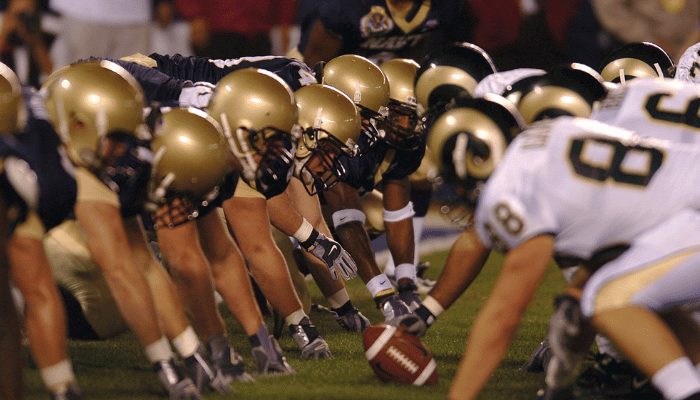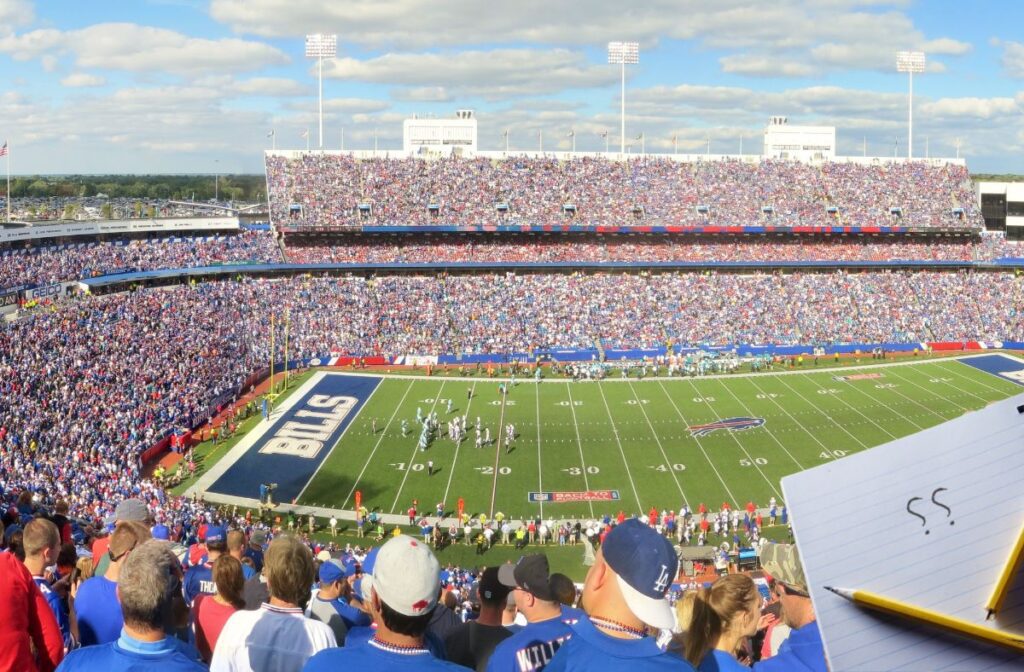The NFL Draft is a captivating annual event that holds the potential to transform the fortunes of football franchises and the lives of aspiring athletes. While many are familiar with the draft’s excitement, the significance of its multi-round structure often remains a mystery. This comprehensive guide will delve into the depths of the NFL Draft’s round count, unraveling its rationale, evolution, and the strategic implications it carries for teams and players alike.
Understanding the Rounds: Building a Winning Roster:
The foundation of the NFL Draft lies in its multi-round structure, each round serving as a stepping stone to construct a competitive team roster. Starting from the first round, where the most coveted prospects are snatched up, the draft progresses through several rounds, each offering teams an opportunity to address specific needs and refine their strategies.
The Multi-Round Blueprint: From First to Last:
The NFL Draft typically comprises seven rounds, each playing a distinct role in shaping a team’s future. The first round garners the most attention, as it boasts top-tier talents and has the power to reshape franchises. As the draft proceeds, teams delve deeper into their scouting reports, seeking out players who can fill critical positions and bring unique skills.

How Many Rounds Are in the NFL Draft?
The NFL Draft is structured into a sequence of seven rounds. Commencing on Thursday, April 27, the inaugural round kicks off the event. Subsequently, on Friday, April 28, the proceedings continued with Rounds 2 and 3 unfolding. To conclude the draft process, the spotlight turns to Saturday, April 29, for the culmination of Rounds 4 through 7.
Historical Evolution of Rounds: From Modesty to Abundance:
A journey into the history of the NFL Draft reveals how its round count has evolved over the years. The draft’s modest beginnings with fewer rounds expanded as the league grew in size and popularity. Milestone moments, rule changes, and the rise of player talent have all shaped the draft’s current multi-round format.
Draft Strategy: A Game of Chess Across Rounds:
The NFL Draft is as much about strategy as it is about talent. Teams approach each round with a specific plan, considering position needs, player availability, and long-term potential. The initial rounds prioritize securing marquee talents, while later rounds provide opportunities for teams to take calculated risks, uncover hidden gems, and address depth concerns.
Hidden Gems in the Rough:
Some of the most legendary NFL players have emerged from the later draft rounds. Their stories epitomize the unpredictability of the NFL Draft and underscore the significance of scouting and player development. These late-round gems demonstrate that success in the NFL isn’t solely determined by draft position but by a combination of talent, determination, and opportunity.
Enhancing Depth and Fairness:
Compensatory picks add another layer of complexity to the NFL Draft. Awarded to teams that lose free agents, these extra selections help balance the playing field and reward teams that contribute to developing the league’s talent pool. The presence of compensatory picks ensures that the draft remains fair and competitive.
Fan Engagement and the Drama of Multi-Round Selections:
The multi-round structure of the NFL Draft extends its drama across multiple days, keeping fans engaged throughout. The anticipation builds with each passing round as fanbases eagerly await their team’s selections. The extended format offers a unique blend of excitement, surprise, and speculation that resonates with football enthusiasts worldwide.

Rules and Process Unveiled
Since its inception in 1936, the NFL Draft has traversed a dynamic journey through various transformations. Its initial incarnation as a private gathering, attended by management representatives from each team, saw decisions often influenced by preseason college football magazines.
As time progressed, scouting and player evaluation evolved into a meticulous science. The 1950s and ’60s witnessed the draft’s burgeoning popularity among fans. However, it wasn’t until the 1980s that the draft became the media phenomenon it is today. Pioneering draft experts such as the late Joel Buchsbaum of Pro Football Weekly and ESPN’s Mel Kiper Jr. introduced comprehensive guides, delving into intricate player analyses that outlined the strengths and weaknesses of prospective draftees.
The advent of ESPN’s televised coverage marked a pivotal juncture, catapulting the draft’s prominence. The NFL Draft comprises seven rounds, with each team being granted a single pick in each round. Furthermore, the landscape is enriched with compensatory picks, a mechanism introduced when teams lose free agents, further amplifying the intricacies of this captivating event.
Deciphering Team Selections
The allocation of draft positions to NFL teams revolves around a meticulous methodology grounded in their previous season’s performance.
For teams that fell short of the playoffs, the first 18 selections are theirs to claim. Here, the team with the most challenging record earns the coveted first pick, and the following selections, from slots 1 to 18, are distributed according to their regular season accomplishments. Teams with inferior records are rewarded with earlier slots, while their more successful counterparts secure later placements.
Slots 19 through 32 are designated for playoff qualifiers. The initial six teams eliminated in the wild-card round are assigned slots 19 through 24, dependent on their regular season standings. The subsequent slots, 25 through 28, belong to the teams that fell in the divisional playoffs based on their regular season records. For the losers of the conference championships, slots 29 and 30 await. The Super Bowl’s unfortunate runner-up claims the 31st slot, leaving the grand finale for the Super Bowl champions.
In scenarios where two teams conclude the season with matching records, the NFL employs an array of tiebreakers to establish their draft order. Frequently, the primary tiebreaker—the strength of schedule—suffices. This involves evaluating the collective winning percentages of all opponents faced and comparing them. The team that navigated a more challenging schedule claims the earlier selection.
Should both teams share the same strength of schedule, the NFL delves into assessing the strength of their respective divisions. If this measure doesn’t yield a resolution, the strength of the conference comes into play. In the rare instance of still reaching an impasse, the league resorts to the following methodologies:
- Head-to-head record
- Best record in common games (minimum of four)
- Strength of victory for the entire season
- Best combined points scored and points allowed for the season
- Most points scored for the season
- Most touchdowns for the season
- Coin toss
It’s worth noting that the NFL integrated these additional tiebreakers in 2019. Before this revision, a coin toss determined their draft order in cases where teams shared the same record and strength of schedule.
As the NFL Draft’s methodology continues to evolve, it remains a fascinating insight into the intricacies of team selections and a testament to the league’s commitment to ensuring fairness and competitiveness.
A Journey Through Rounds and Evolution
In 1997 the NFL underwent a pivotal transformation, transitioning to a 7-round draft structure. This restructuring introduced the reverse order of standings as the standard for each round’s selection order, a framework that persists today. As we find ourselves in 2023, the NFL Draft continues to be a seven-round affair, a testament to its enduring efficacy. Since 2010, this riveting process has spanned three days, each laden with anticipation and excitement.
The drafting spectacle unfolds across multiple television networks, a testament to its popularity. However, the inaugural televised draft took place in 1980, courtesy of ESPN. This pivotal moment was initiated when Chet Simmons, then-president of ESPN, approached NFL commissioner Pete Rozelle with an audacious proposition—to broadcast the selection process.
Initially met with skepticism, Rozelle pondered the notion of televising teams ascending the podium to declare a player’s name. Yet, recognizing the potential, he sanctioned the concept. The subsequent revelation proved nothing short of a resounding success, captivating the audience’s attention and forever altering the landscape of draft coverage.
The evolution of the drafting process from its humble beginnings to the televised extravaganza we witness today underlines the NFL’s commitment to innovation and fan engagement.
Navigating Decision Windows: Time Constraints for Draft Picks
Efficiency takes center stage in the NFL Draft process, as teams operate within predefined time limits for their selections. This orchestration of time keeps the event’s pace brisk, and the audience engaged, all while maintaining a degree of strategic suspense.
The first round of the draft grants teams a generous 10-minute window to deliberate and determine their pick. As the draft progresses into the second round, the timeframe tightens to 7 minutes, facilitating smoother transitions between selections. In rounds three through six, teams have 5 minutes at their disposal to discern their best choice. Finally, the seventh round pares it down further to a succinct 4 minutes.
Interestingly, teams possess the flexibility to surpass these time limits if they so choose. However, once the allocated time expires, the spotlight shifts to the next team, setting them “on the clock.” This transition from one team to another has implications—failing to make a decision within the timeframe can result in the following team swiftly snatching up a prized player. This scenario, known as “sniping,” underscores the strategic importance of respecting the clock.
The inherent balance between swift decision-making and meticulous evaluation characterizes the NFL Draft’s tempo. With each tick of the clock, teams weigh their options, factoring in potential trade opportunities, positional needs, and player evaluations. As the draft unfolds, the orchestrated timing not only keeps the event captivating but also introduces an undercurrent of urgency, underscoring the high-stakes nature of the selections.
Balancing the Scales: Unraveling Compensatory Picks
Beyond the standard 32 selections bestowed upon each of the seven rounds, the NFL introduces an intricate element known as compensatory picks. These additional selections are strategically allocated to teams based on a delicate interplay of gains and losses in the realm of free agency. The compensation aims to maintain equilibrium amidst the ebb and flow of player movement.
The allocation of compensatory picks hinges on the net balance of players gained and lost during free agency in the preceding year. For teams that have experienced a net loss of compensatory free agents exceeding those they acquired, the NFL rewards them with supplementary selections spanning rounds 3 through 7. A dynamic twist emerges when teams achieve an equilibrium of gained and lost players but find themselves relinquishing higher-valued assets. In such instances, a compensatory pick finds its home at the close of the 7th round.
A notable facet of the compensatory pick process is its timing. Just prior to the commencement of the new league year, the veil is lifted on the awarding of these additional selections. The delicate dance of free agent gains and losses conducted post the league year’s inauguration earmarks its impact on the subsequent draft. For instance, in the context of the 2023 NFL Draft, the pivotal deadline was set on May 2, 2022. Any shifts in player composition beyond this threshold cast their influence on the terrain of the 2024 NFL Draft.
The concept of compensatory picks adds a layer of intricacy to the NFL Draft, reflecting the league’s endeavor to uphold fairness while accommodating the fluid nature of team rosters.
The Art of Exchange: Unveiling the Dynamics of NFL Draft Trades
Within the realm of the NFL Draft, draft positions morph into prized assets, ushering in a world of strategic trades and calculated maneuvers. Once a team secures its designated slots, the avenue for trades unfolds, amplifying the negotiating canvas. In the intricate dance of player transactions, draft slots often become the linchpin to sweeten the deal, orchestrating the movement of not just players but also future draft positions.
Venturing into trading draft positions introduces an element of uncertainty—a gamble embarked upon by both teams involved. With the future’s veil shrouding the precise value of the draft pick, a team might wager on a forthcoming second-round selection for the year 2024. Yet, the catch lies in the unknown—the pick’s position in the round remains concealed until its time arrives.
Furthermore, the draft day itself pulsates with dynamic energy, birthing real-time pick swaps. On-the-fly decisions are the norm, driven by evolving player scenarios and strategic aspirations. The story unfolds fluidly—a team aiming for a specific wide receiver at the 16th pick in the first round might recalibrate its plans if that prized player is selected earlier, say by the team at the 14th slot. The immediate response could entail trading down in exchange for additional draft assets, perpetuating the tapestry of strategic choices.
Every trade unfurls as a distinct narrative, woven with its own motivations and implications. To garner official league approval, a meticulously choreographed dance transpires. Both participating teams must harmoniously notify the league, relaying identical information. At this juncture, the league grants its seal of approval, a decision echoed to all 32 teams. Notably, this declaration transcends digital realms, making its presence palpable at the Draft venue through in-person announcements that ripple through the media channels.
The intricate web of NFL Draft trades is a testament to the league’s dynamic nature, where strategies, aspirations, and opportunities interweave to shape the future of both teams and players.

Qualifications for the NFL Draft: Charting Player Eligibility
The pathway to NFL Draft eligibility entails a series of prerequisites that underscore the significance of experience and exceptional circumstances. To merit consideration, a player must have concluded their high school journey at least three years before the draft’s onset. This criterion aims to ensure prospects possess a foundational timeline that enhances their readiness for the professional realm. Those who have completed their junior year or stand as red-shirt sophomores are among those who can enter the draft fray.
However, the landscape accommodates exceptions for college underclassmen through a specialized waiver process. This avenue opens doors for those grappling with unique hardships. The waiver becomes a gateway for players navigating atypical circumstances to engage with the draft’s selection process.
Intriguingly, the realm of undrafted players carries its narrative. The annals of NFL history bear testament to the dichotomy that characterizes the draft—an intricate blend of hits and misses. Undrafted individuals defy convention, making their mark as impactful NFL players. This lineage of under-the-radar triumphs includes luminaries such as Kurt Warner, Rod Smith, Warren Moon, Willie Brown, John Randle, and Tony Romo. Their journeys underscore that the draft’s verdict doesn’t solely determine a player’s destiny, and undrafted talents can illuminate the league with their brilliance.
The NFL Draft’s qualification journey balances standardized criteria and avenues for unique circumstances. It’s a testament to the league’s effort to offer equal opportunities while acknowledging the unforeseen paths that talent can tread.
In Conclusion, I can say that embracing the Complexity of the NFL Draft’s Rounds:
The NFL Draft’s multi-round format embodies the essence of competition, strategy, and the pursuit of excellence. As we’ve explored the significance of each round, the evolution of the draft’s structure, and the stories of success that emerge from its depths, it becomes clear that the NFL Draft is more than just player selections. It’s a reflection of the league’s evolution, the dedication of teams to building championship rosters, and the enduring excitement that captivates fans year after year.

